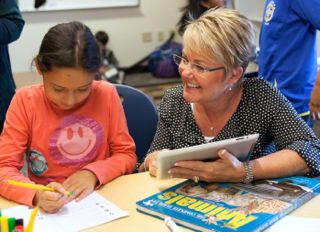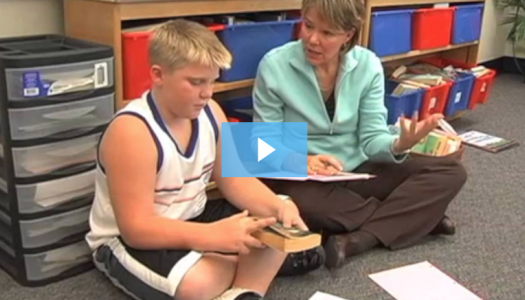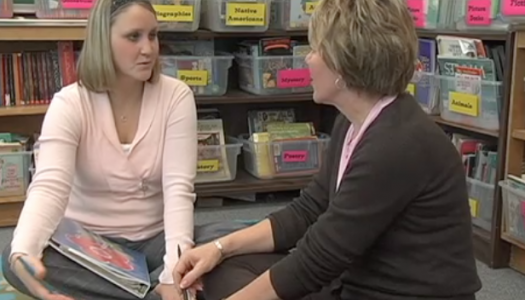A Road Map to Guide Goal Setting and Instruction with Students
Join Our Community
Access this resource now. Get up to three resources every month for free.
Choose from thousands of articles, lessons, guides, videos, and printables.
At an International Reading Association Conference, Lucy Calkins shared that when we are working with a child or assessing a student, we often see the huge scope of what they need to move forward. However, it is our job to narrow our focus to the one or two things we believe will provide the greatest benefit.
After an assessment or conference, figuring out the next steps for each student in our care can seem like an overwhelming task. The good news is that we have some tools we consistently rely upon to help us figure out the next steps for our students whenever we meet with them?at the beginning of the year or midyear alike.
We use 7 Steps from Assessment to Instruction with all students each fall as we do our first round of individual assessments. These same steps are the ones we use when we receive a new student or during the course of the year when setting goals or reassessing children. From the assessment to setting goals verbally with each student; having each child place their name on the CAFE board; inputting their goal into the ConferringNotebook, our online conferring notebook; and beginning to form flexible strategy groups, these steps guide us to use the all-important individual assessments to inform our instruction.

When initially assessing students, it can be easy to recognize the myriad of things we need to teach them to move forward. It may be relatively easy to recognize the large goals a student needs, such as comprehension, accuracy, fluency, or vocabulary. However, deciding which specific strategy will best help move them forward can be the tricky part. To support our decision making we use these tools:
- From Assessment to Instruction, Sample Needs and Strategies: This simple one-sheet document outlines some of the common reading challenges we see when assessing students. It then provides a goal and two suggested strategies to help get us started homing in on the strategy the student needs.
- Ready Reference Guides: Each CAFE strategy has a Ready Reference Guide. These guides provide a definition of each strategy, the reason a student may need the strategy, and the secret to making the strategy work, as well as a couple of ways to teach it. Knowing about the strategies and why students may need a particular one provides a starting point for matching strategies to children and their needs.
- CAFE Menu Organization: We are often asked if the CAFE Menu has a specific order in which to teach the strategies. We know there is no one sequence that will make a proficient reader out of every single child. Yet we have organized our CAFE Menu so the strategies most often used with automaticity by proficient readers are toward the top. It looks like this: the first six in Comprehension, the first five in Accuracy, the first four in Fluency, and the first three in Expand Vocabulary. We usually begin with one of these, especially if it isn't clearly evident yet which one we need to start with.
With all the tools, suggestions, and ideas to guide us where to go with each of our children, we know that sometimes we will attempt to teach our students a strategy we believe will be their next best step only to realize through conferring that it is not the best one at all! This is not uncommon and not something to be feared. Instead this is what makes teaching such a wonderful career choice. We get to use our head and learn with our students. The great news is that given the structure of Daily 5 and CAFE, we are able to confer with children so often that attempting a strategy for a couple of conference sessions and then changing our mind and trying a different approach doesn?t mean we have lost much time at all.
We want to always keep in mind that the best teaching is done in response to our individual assessments and conferring with children. There is no one way to teach our students. They are humans with very different needs. This is also why there is no program in the world that can tell you what all of your students need. Only you know your students.
So what is this so-called road map? It consists of assessments informing us what our students' strengths and greatest needs are; tools to provide guides to help with our teaching, thereby adding teaching tools to our repertoires; and teachers willing to put themselves out there, making the best decisions they can given the information presented to them and not being afraid to change approaches, all on behalf of the students in their care.






